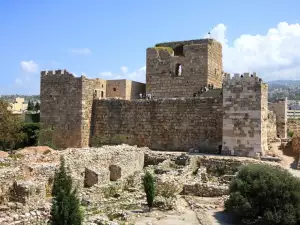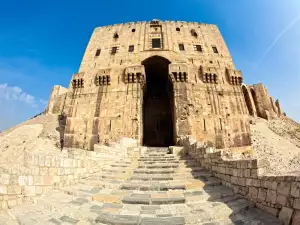Salamis
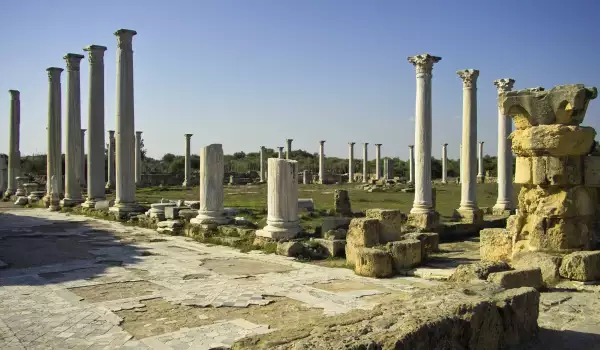
Salamis is the name of the ancient city state, which was prosperous on the island of Cyprus during the 8-6 century BC and beyond. Salamis today is a unique archaeological complex located on the eastern Cypriot coast. Interesting ruins of the ancient village stand at 6 km north of the modern town of Famagusta. This region represents the end of the fertile plain between two mountains.
It is believed that the island's name probably comes from Shalam, Phoenician for peace, under which it is celebrated in the works of Omir. According to some sources, Salamis comes from the name of the nymph Salamis, and that according to legend is the mother of the first king of the island.
In the 6 century BC Salamis was already an important center of the beach. The earliest archaeological finds here date from the eleventh century BC (Late Bronze Age). Copper ore deposits make Cyprus one of the most important commercial crossroads.
Simultaneously, the land of Salamis outlines the Oriental cultural face of mainland Greece at the end of the so-called. Greek Dark Ages.
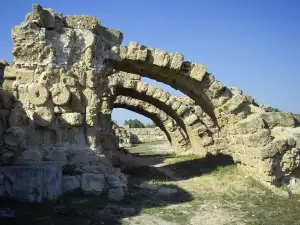
In the 6 century BC, in Cyprus are the first coins minted, following Persian prototypes. At that time the island was under the control of the Assyrians, but the city state Salamis enjoys relative autonomy while paying taxes to the Assyrian crown. Many rulers of the city accumulated wealth in this period.
Evidence for this comes from the royal tombs, where in honor of the deceased king was sacrificed a stallion. In the tombs were put jars with olive oil.
Mythological founder of Salamis is Teucer, who was the son of Telamon, who was king of the island Salamis, Standing against Attica. According to Greek legends, on the island is born hero Ajax. Teucer failed to return after the Trojan War at home because he had to avenge his brother Ajax. On 28 September 480 BC Sharon in the bay near the island Salamis, in the Aegean consists an epic battle between Greek and Persian fleets.
It is part of the second Greek-Persian War and ends with a brilliant victory for the Greeks, who turned the war in their favor. The Salamis battle was described by Aeschylus in the form of a message that takes a Persian messenger Athos, to the mother of Xerxes, in which he tells her how the Persian army was defeated at Salamis.
Excavations in Salamis began in 1952 and completed in 1974. Before the Turkish invasion, in the ruins there had been many archaeological finds. Most existing today are the ruins of Roman times. Once there was a temple of Zeus, Which probably existed since the founding of Salamis.
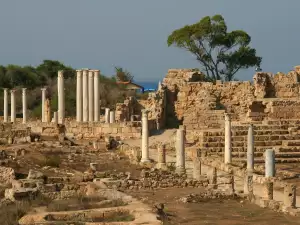
The remains of it talk about the Hellenistic period. During the Roman Empire, in Salamis there was a cultural center located in the larger northern part of town. There you can see a gymnasium, theater, amphitheater, stadium, arena and public baths.
In the gym, you can see many restored statues, most of them without heads. Here is the original place of the statue of Augustus, but some of the columns were transferred at a later stage from the theater after a major earthquake in the 4th century.
Theater Salamis is also from the time of Augustus, being able to accommodate 15, 000 spectators. In Salamis were found and restored bathrooms and public toilets, which are for 44 people.
You can still see the ruins of the Agora and sanitation, which was the village water supply.

